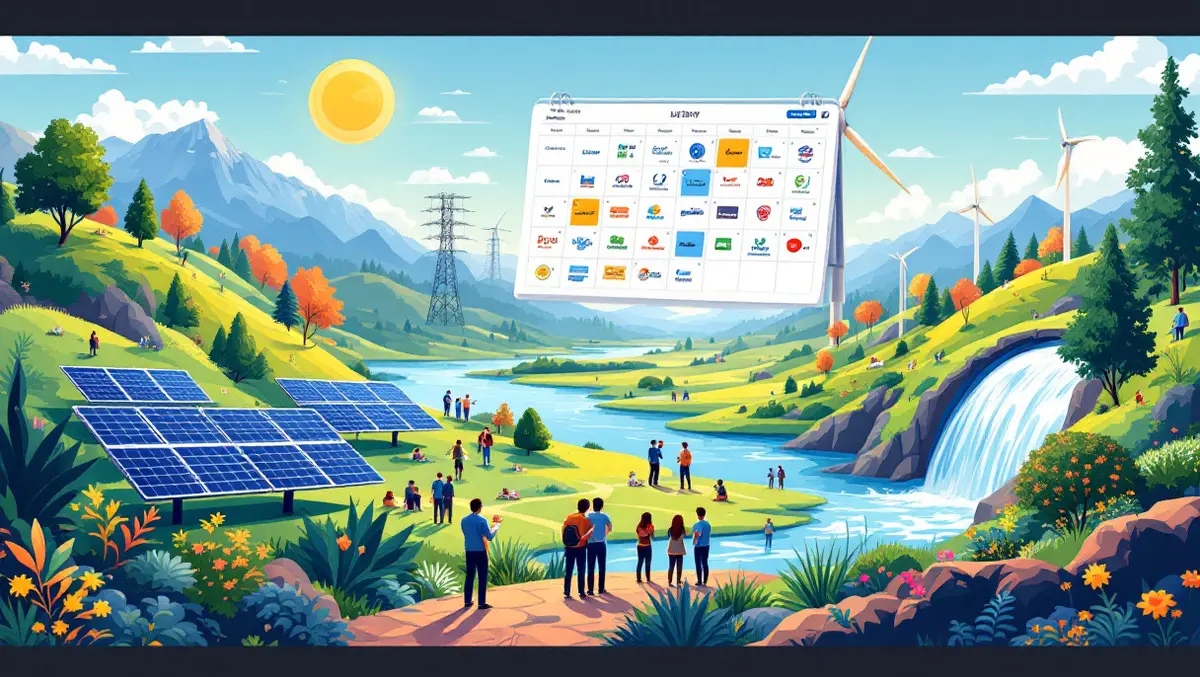
LF Energy welcomes Hydro-Quebec as strategic member, sets new events
LF Energy has announced several developments in early 2025, including the addition of Southern California Edison as a member and Hydro-Quebec's advancement to Strategic Member status.
Southern California Edison (SCE) has become the first investor-owned utility in the United States to join LF Energy at the General level, signifying growing support for open source solutions to the energy transition within the US sector. Aetheros also joined as a General Member, expanding the foundation's network of contributors.
Hydro-Quebec, which had previously joined as a General Member, has elevated its involvement by upgrading to the Strategic Member tier - the initiative's highest level. This move enables Hydro-Quebec to take a leading role within LF Energy's governance, with Sébastien Lussier joining the Governing Board and Moïse Kamgoué Kameni taking a place on the Technical Advisory Council. LF Energy stated, "This is the highest level of membership in LF Energy, and is a clear indication of the benefits the utility is deriving from open source community participation."
The foundation also revealed key dates for its upcoming LF Energy Summits. For the first time, two separate conferences will be held: the European edition is scheduled for September 10-11 in Aachen, Germany, and the inaugural North American event will take place on October 3 in Montreal, Canada, following the CIGRE 2025 International Symposium. Registration for both events is opening in stages, and speaking proposals for the European conference are being accepted until May 25.
LF Energy Summits bring together a diverse coalition of electric utilities, technology firms, researchers, and other industry actors to discuss developments in open source projects and share operational insights. The events are designed to promote collaborative learning and technology transfer across the sector.
One of the foundation's member-driven projects, Grid2Op - created by RTE France - has now been accepted into LF Energy. Developed originally as a research and automation platform for power grids, Grid2Op has gained widespread adoption in both academic and industry settings for its utility in power system optimisation. The foundation commented, "Grid2Op will benefit from a larger open source community, fostering collaboration and advancements in sustainable energy solutions."
LF Energy has also published its 2024 Annual Report, examining progress over the past year and outlining future directions for open source involvement in the energy transition. The report is aimed at utilities, researchers, vendors, and other parties seeking to evaluate the impact of collaborative software on the sector.
In addition, LF Energy has released a new paper "Unlocking AI's Potential for the Energy Transition Through Open Source" which investigates the necessity of open source approaches in accelerating AI integration across the energy industry. The report assesses current AI projects in the sector and provides recommendations for stakeholders regarding AI readiness and adoption.
The Electric Power Research Institute has launched the Open Power AI Consortium, with LF Energy serving as a founding member. The consortium's objective is "to drive the development and deployment of an open AI model tailored for the power sector, accelerating AI adoption to reduce operating costs while improving the energy customer experience."
In relation to real-world applications, LF Energy has shared case studies to illustrate the benefits of open source solutions. In the Netherlands, Qwello and Park&Charge revitalised 191 outdated electric vehicle chargers using LF Energy's EVerest software stack and the PhyVERSO charge controller, which was developed in collaboration with Qwello, Pionix, and Phytec. According to the case study, this approach extended the lifespan of valuable infrastructure, reduced risks associated with stranded assets, and supported global sustainability objectives.
Another case study describes the deployment of the SEAPATH platform by RTE, the French transmission system operator. SEAPATH enabled the adoption of a digital, IEC 61850-based, multi-vendor Protection, Automation, and Control System (PACS) in RTE's substations. The first implementation has operated since the end of 2023, with RTE planning up to 100 substation deployments by 2030.
Several LF Energy projects have achieved new milestones. Version 1.0 of SEAPATH has been released, providing a production-ready open source software hypervisor for digital substation automation, with support for various operating systems. CitrineOS, an open source Charging Station Management System, now supports OCPP 1.6 following its 1.6 release. OpenSynth, a platform for developing machine learning models for energy prediction and grid optimisation, has released version 0.0.6, improving feature performance and facilitating collaboration with partners such as Centre for Net Zero and TU Delft, who have contributed valuable datasets.
Further updates include the release of the LF Energy TROLIE Java Client SDK 1.0.0, enabling Java-based integration with the Transmission Ratings and Operating Limits Information Exchange API, as well as OperatorFabric v4.6.0 which brings new functionalities for operators across utility sectors. The PowSyBl community concluded its 2024.4.0 release train, adding features like voltage level topology model conversion. The latest FlexMeasures release, v0.24, introduces expanded congestion modelling.
Upcoming LF Energy-supported events comprise an open EV charging workshop in Detroit on May 15, a Power Grid Model Meetup in Delft, Netherlands on May 21, and a session at Open Source Summit North America in Denver from June 23-25, addressing open source ecosystems for the energy industry.


